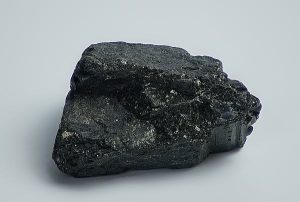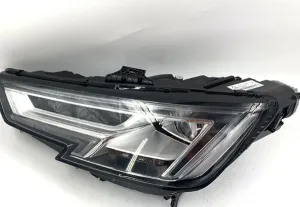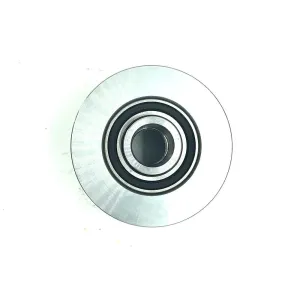Ilmenite is an oxide mineral of iron and titanium, also known as titanium magnetite . It is the main ore for refining titanium. Ilmenite is heavy, gray to black, with a bit of a metallic sheen . The crystals are generally plate-shaped, and the crystals are grouped together into blocks or granules. The composition is FeTiO 3 . TiO 2 content is 52.66%, which is the main mineral for extracting titanium and titanium dioxide . Trigonal crystal system. In the Panzhihua iron ore in Sichuan, China, ilmenite is distributed between magnetite particles or in cracks , forming large deposits. The chemical composition of ilmenite is related to the conditions of formation. Ilmenite produced in ultrabasic rocks and basic rocks has a high MgO content and basically does not contain Nb and Ta; ilmenite produced in alkaline rocks has a high MnO content and contains Nb and Ta; Ilmenite in acidic rocks has high FeO and MnO contents, and relatively high Nb and Ta contents.

type #
Ilmenite is often used as an accessory mineral, or is dispersed in magnetite in basic and ultrabasic rocks into strips and flakes, and is symbiotic with enstatite , plagioclase, etc. Pegmatite ilmenite is produced in granitic pegmatite and is symbiotic with microcline feldspar , muscovite , quartz, magnetite, etc. Ilmenite is often concentrated in alkaline rocks . Due to its stable chemical properties , it can form alluvial placers, symbiotic with magnetite, rutile , zircon , monazite, etc. It can be distinguished from hematite or magnetite according to its crystal shape , streaks and weak magnetism. Ilmenite is the most important titanium ore mineral.
Development History #
Titanium can also form many compounds, which also have various special properties and uses. For example, titanium dioxide is a snow-white powder. It is the best white pigment, commonly known as ” titanium white “. 1 gram of titanium dioxide can cover more than 450 square meters. Centimeter area is painted white. The amount of titanium dioxide used as white pigment in the world reaches hundreds of thousands tons per year. If titanium dioxide is added to paper, it can make the paper white and opaque. Therefore, titanium dioxide is sometimes added to make paper for banknotes and art. In addition, in order to lighten the color of plastic and soften the luster of rayon, sometimes it is also added. To add titanium dioxide. Titanium dioxide is known as the whitest thing in the world. Most of the titanium in nature is in a dispersed state, mainly forming the minerals ilmenite TeTiO 3 and rutile TiO 2 , as well as vanadium ilmenite, etc. The Panzhihua area of Sichuan Province in my country is extremely rich in vanadium-ilmenite ore, with reserves of approximately 1.5 billion tons.
So, how was titanium discovered? In 1791, British scientist Gregor found a kind of ore-black magnetic sand in the suburbs of Minahan. Through research on this ore, he believed that there was a new chemical element in the ore. And named this new element after the place where the ore was found, ” Minahan “.
Four years later, the German chemist Klaplot discovered this new element from a red ore in Buynik, Hungary. He named it after the “Tai Dan” tribe in Greek mythology (Chinese according to its original text The transliteration of the name, named titanium), Klaplot also specifically pointed out that the new element “Minahan” discovered by Gregor was titanium, but what was found at that time was actually powdered titanium dioxide instead of Titanium metal. It was not until 1910 that the American chemist Handel produced titanium metal with a purity of 99.9% for the first time, but the total was less than 1 gram. It took 120 years from the discovery of titanium to the preparation of titanium metal. It was not until 1947 that people began to smelt titanium in factories, with an annual output of only 2 tons at that time. By 1955, production surged to 20,000 tons. By 1972, annual output reached 200,000 tons. Titanium’s uses are becoming more and more widespread and people are paying more and more attention to it. People call it the steel of the future and the metal of the 21st century.
Industrial applications #
Pure titanium is a silver-white metal. Titanium minerals are widely distributed in nature, accounting for about 0.6% of the crust’s weight, second only to aluminum, iron, calcium, sodium, potassium and magnesium, and more abundant in the earth’s crust than copper, tin, manganese and zinc. Several times or even dozens of times. The melting point of titanium is 1725°C. Its main characteristics are low density and high strength. Compared with steel, its density is only equivalent to 57% of steel, while its strength and hardness are similar to steel. Compared with aluminum, although the density of aluminum is smaller than that of titanium, its mechanical strength is very poor. Therefore, titanium combines the advantages of steel (high strength) and aluminum (lightweight). Pure titanium has good plasticity, its toughness is twice that of pure iron , and its heat resistance and corrosion resistance are also very good.
Because of these advantages, titanium has become a prominent rare metal since the 1950s. Titanium and its alloys were first used in the manufacture of aircraft, rockets, missiles, ships, etc., and then began to be promoted in the chemical and petroleum sectors. For example, in the manufacturing of supersonic aircraft , because the surface temperature of such aircraft is high when flying at high speeds, aluminum alloys or stainless steels have lost their original properties at this temperature, while titanium alloys still maintain good performance above 550°C. Mechanical properties , so it can be used to build high-speed aircraft exceeding 3 times the speed of sound. The amount of titanium used in this kind of aircraft accounts for 95% of the total weight of its structure, so it is called “titanium aircraft”. About half of the world’s titanium is used to make important parts of aircraft bodies and jet engines . In the atomic energy industry, titanium is used to manufacture the main parts of nuclear reactors . In the chemical industry, titanium is mainly used to manufacture various containers, reactors , heat exchangers , pipes, pumps and valves, etc. If titanium is added to stainless steel, only about one percent is added, which greatly improves the rust resistance.

 April 1, 2024
April 1, 2024 










